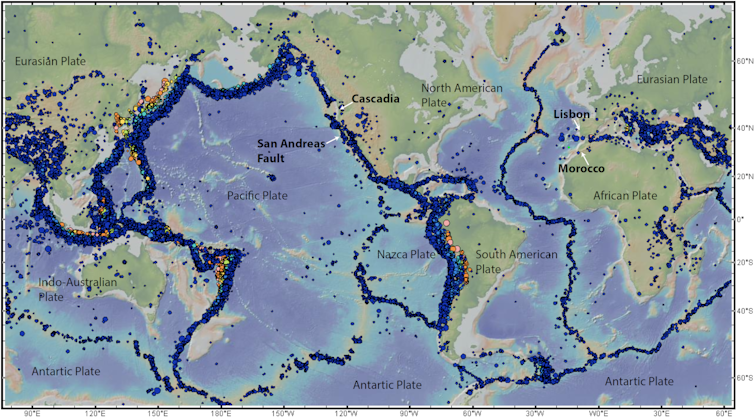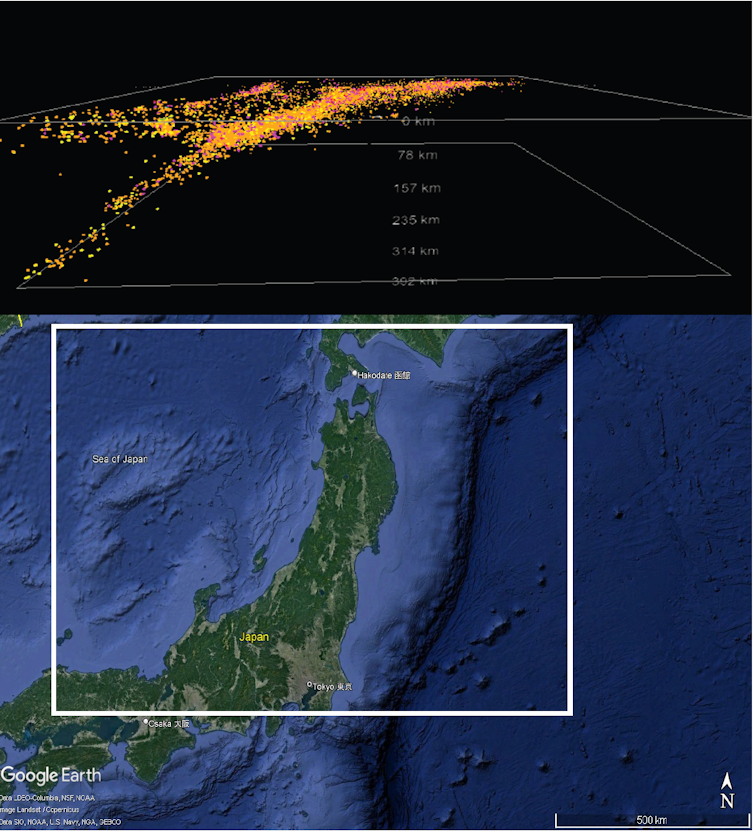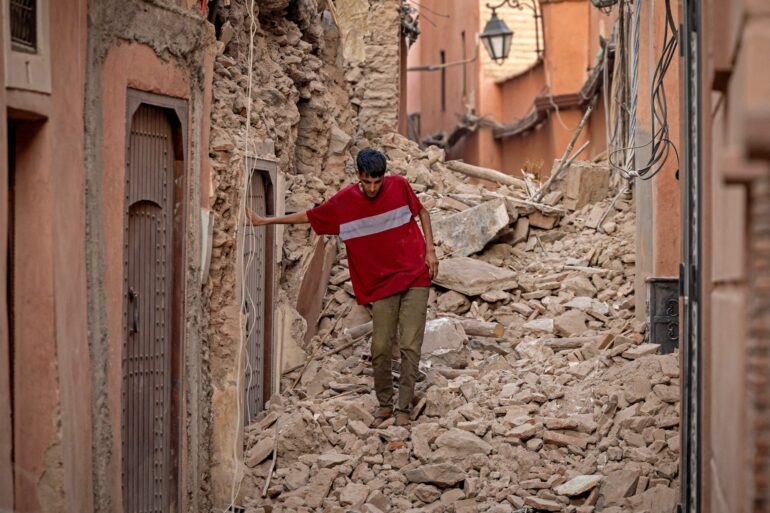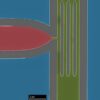Earthquakes, large and small, happen every single day along zones that wrap around the world like seams on a baseball. Most don’t bother anybody, so they don’t make the news. But every now and then a catastrophic earthquake hits people somewhere in the world with horrific destruction and immense suffering.
On Sept. 8, 2023, a magnitude 6.8 earthquake in the Atlas Mountains of Morocco shook ancient villages apart, leaving thousands of people dead in the rubble. In February 2023, a large area of Turkey and Syria was devastated by two major earthquakes that hit in close succession.
As a geologist, I study the forces that cause earthquakes. Here’s why some seismic zones are very active while others may be quiet for generations before the stress builds into a catastrophic event.
Earth’s crust crashes into itself and pulls apart
Earthquakes are part of the normal behavior of the Earth. They occur with the movement of the tectonic plates that form the outer layer of the planet.
You can think of the plates as a more or less rigid outer shell that has to shift to allow the Earth to give off its internal heat.

A map of all earthquakes greater than magnitude 5 from 1960 to 2023 clearly shows the outlines of the tectonic plates.
USGS/GMRT
These plates carry the continents and the oceans, and they are continuously in slow-motion crashes with one another. The cold and dense oceanic plates dive under continental plates and back into Earth’s mantle in a process known as subduction. As an oceanic plate sinks, it drags everything behind it and opens a rift somewhere else that is filled by rising hot material from the mantle that then cools. These rifts are long chains of underwater volcanoes, known as mid-ocean ridges.
Earthquakes accompany both subduction and rifting. In fact, that is how the plate boundaries were first discovered.
In the 1950s, when a global seismic network was established to monitor nuclear tests, geophysicists noticed that most earthquakes occur along relatively narrow bands that either fringe the edges of ocean basins, as in the Pacific, or cut right down the middle of basins, as in the Atlantic.
They also noticed that earthquakes along subduction zones are shallow on the oceanic side but get deeper under the continent. If you plot the earthquakes in 3D, they define slablike features that trace the plates sinking into the mantle.

Ten thousand earthquake locations from 1980 to 2009 trace the Pacific Plate as it subducts under northern Japan. The top image is a side view showing the depth of the earthquakes beneath the rectangle on the map.
Jaime Toro, CC BY-ND
An experiment: How an earthquake works
To understand what happens during an earthquake, put the palms of your hands together and press with some force. You are modeling a plate boundary fault. Each hand is one plate, and the surface of your hands is the fault. Your muscles are…



